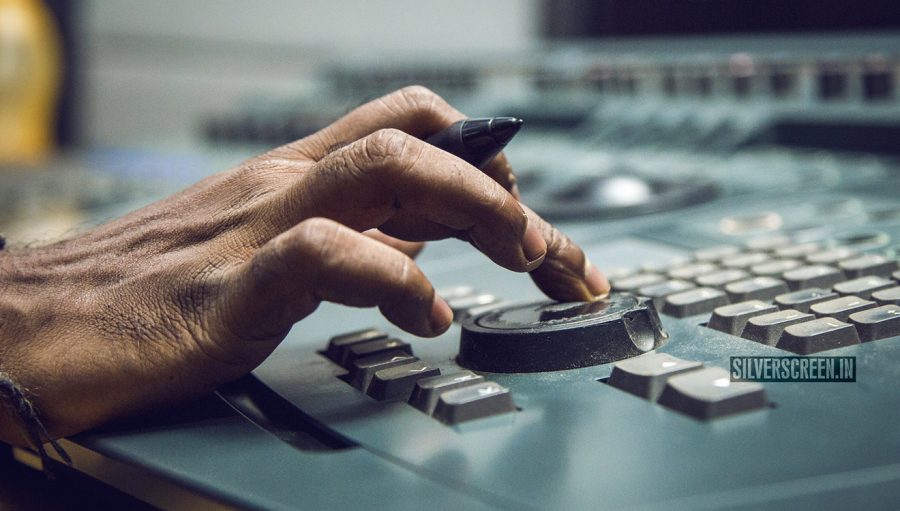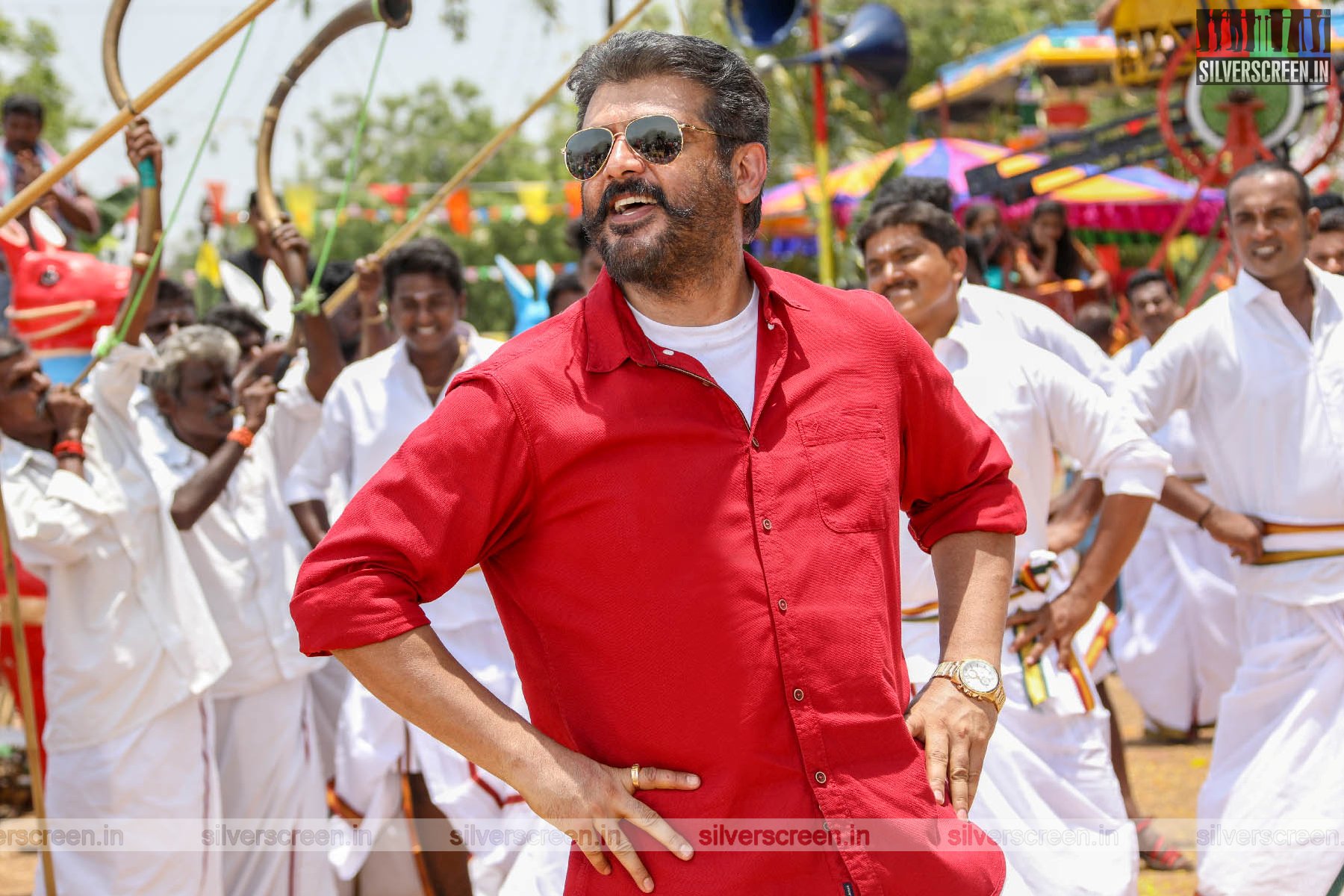Meet S Kubendran, a digital intermediate colourist.
What do you remember most about a film, first? Invariably, it is the look. Is it bright and cheerful, warm and earthy, dark and sad, or a happy mix of hues that reflect the mood of the film, where the pastels meld into jewel tones and move on to monotones?
Let’s give you an example. Remember the Ajith-starrer Mankatha? The black comedy action heist was shot in warm tones, but there was a hint of green in the dark areas. Focus enough on the song ‘Vaada Bin Lada’, especially after minute one, and you’ll see a simple seduction song morph into something else. Suddenly, CGI comes into play. So does the effort of another not-often spoken team. It worked on 14 layers to keep pace with the director’s vision — the background was constantly moving, but seamlessly, without any jumps.
One of those involved in that effort is S Kubendran, and that team is the coloring team. Of late, Kubendran and other digital intermediate colourists have become indispensable to Tamil cinema; in fact, to film and TV productions anywhere. Kubendran has worked with leading cinematographers in the industry, including Vishnu, KV Anand, Sakthi Saravanan, Shyam Dutt, Richard M Nathan, Vijay Ulaganathan, Manoj Paramahamsa, Aravind Singh and Gnanam Subramaniyam, and played a huge part in creating the ‘look’ of many films.
What is a DI colorist?
The DI colourist is the modern, digital cinema version of the colour timer or colour grader of yore.
What does a DI colourist do?
Earlier, when film simply meant black-and-white negatives, it was the colour-timer’s job to time the exposure – that is, determine how long the footage had to be developed, and when it could be moved to the next stage. Each stock of film was different, and films were shot at different times of the day and under varying light conditions. Therefore, it was the task of the timer to ensure a consistent look. The timer also took care that the mood and tone of the film didn’t jump between scenes, or even within a scene. This role evolved over time, with the arrival of colour films, better cameras and lighting, and the development of technologies such as telecine and digital cinema.
A DI colourist today essentially does the same – he/she ensures that images on the screen are consistent and clean, and that the film has a specific “look and feel” that is in tune with the vision of the director and cinematography.
Kubendran has seen many of these changes himself, and worked on some of the most cutting-edge technologies as they emerged. Silverscreen met Kubendran to get a lowdown on his job, and how he adds life to films.
What exactly is a DI colourist’s job?
For example, in a horror film, the cinematographer might want dark tones and patterns; we create it, because you cannot always shoot that way. It’s a fully digital workflow now; everything is graded, and directly transferred to the projector.
How long have you worked with colour?
I started in 2004, and I’ve worked as colourist in over 100 films in Telugu, Malayalam, Kannada and Tamil. I began with Lucky, a Kannada film with award-winning cinematographer Krishna. I did the colouring for the entire film, and was a little tense about his reaction. But, he was happy with my work.
I’ve worked on films by KV sir (KV Anand) and Gautham Vasudev Menon. KV sir appreciated my work in KO; it was a stressful job, because we were racing against time. Once Mankatha was wrapped up, cinematographer Shakti Saravanan thanked me for playing a role in the quick completion of the production.
In Malayalam, I’ve worked on Baskar the Rascal, The Great Father, Kasaba, How Old Are You… In Tamil, I’ve done films such as Pandigai, Ippadai Vellum, Vanakkam Chennai, Nanban and Nee Thaane En Pon Vasantham.
How does one learn to be a colourist?
These days, there is a DFT course for DI colouring. But, I learnt on a job – as a lab technician and grader, before I moved to telecine, and now this.
What’s the workflow like for a colourist?
A line producer is in charge of receiving content, managing timelines, sending content out, managing clients and CGI status. A conformist checks received footage, and assigns it accordingly. Once the colourist has finished work, the conformist monitors output and informs the client or line producer.
After the director or the cameraman okays the work, we get the files for final grading. When all the colouring/grading is finished, we will need to then match the cuts to the editor’s reference – to their time code.
At this stage, the editor will come in to make sure the timecodes are all matching. An editor’s okay is most essential for the film to be locked.
When it comes to the colours, and the look of the film, the cameraman and director are the boss. Each cameraperson will have their own style. Occasionally, I suggest a different style to a camera person.
The cameraman also operates within a strict timeframe and deadline. If they are able to achieve the look they want for that film within that deadline, then the work at my end is easier.
My work begins after footage is generated for grading. The editor would have worked on a sequence with a time code, and that is what I work on too. The editor’s reference is my reference too. My output has to be given before computer graphics is inserted; only after a DI/colourist works on it will it go to the graphics artist.
After the director or cinematographer approves the colourist’s work, I get it for final grading. We again match it to the editor’s reference. At this stage, the editor steps in to ensure the timecodes match. An editor’s approval is most essential for a film to be ‘locked’.
When it comes to the colour and the look of the film, the cinematographer and director take charge. Every cinematographer has his/her own style, and if he/she operates within a timeframe and achieves the desired look, my work becomes easier.
Everyone comes to the DI’s desk – actors, directors, editors, cinematographers… Once the cinematographer, editor and director approve of it, I hand over my final output as a DPX or TIFF file.
The certification board is an important cog in the wheel. Fifteen days after a film is locked, the members of the board watch it; all feedback goes to the editor, who carries out decided changes, if any.
Apart from checking the output here, I also accompany the team to Qube to check if the output at the production and projection ends match, and if it has been encoded properly. After this, a movie is distributed to theatres.
Every film needs to go through the censor anyway. The government rule is 15 days after production is locked, censors will view.
What are your work hours like?
A film takes about 20 days, on an average. Some might take longer, depending on additional CG or visual effects. For instance, a film like 2.0 will take much longer. I’ve known films that have taken just a week and other that have gone on to three months; it all depends on how the film has been shot. I work on about 12 films a year.
Recommended
There is usually only one colourist for a film. I clock about eight hours a day, but, sometimes, it might extend to even 14 hours. I work in a dark room and constantly look at the screen, resulting in my eyes getting strained. Then, it becomes hard to judge the colours; this affects the film. Therefore, I step out into an open area, rest my eyes, and then get back to the world of colours.
Did you know?
It is believed that colours that look just right at night will seem deeper in the day. So, from the time of film, colourists have avoided working in the night. The only time the rule is bent is when a release is due and the deadline is very short.



